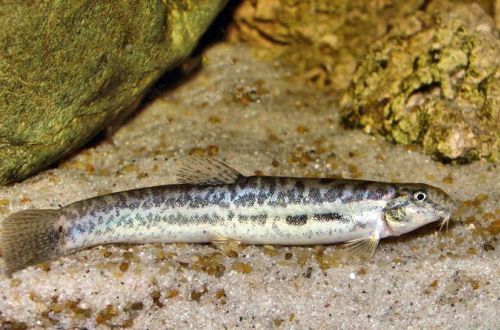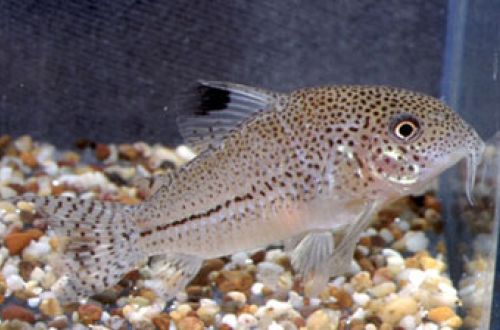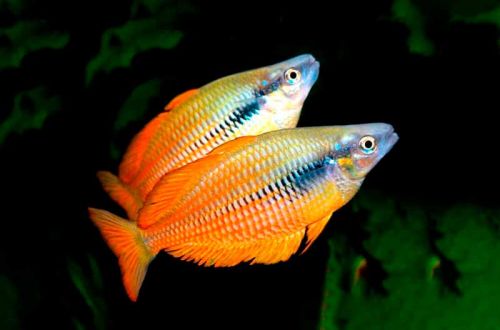
Cockerel sa Stigmos
Betta Stigmosa or Cockerel Stigmosa, scientific name Betta stigmosa, belongs to the Osphronemidae family. Easy to keep and breed fish, compatible with many other species. Considered a good choice for beginner aquarists with little experience. The disadvantages include nondescript coloring.
Kaundan
Habitat
It comes from Southeast Asia from the Malay Peninsula from the territory of the Asia Minor state of Terengganu. The type specimens were collected in the region known as the Sekayu Recreational Forest near the city of Kuala Berang. This area has been a tourist attraction since 1985 with numerous waterfalls among the hills covered with rainforest. The fish inhabit small streams and rivers with clean clear water, the substrates consist of rocks and gravel with a layer of fallen leaves, tree branches.
Mubo nga impormasyon:
- Ang gidaghanon sa aquarium - gikan sa 50 ka litro.
- Temperatura – 22-28°C
- Bili pH - 5.0-7.0
- Katig-a sa tubig – 1–5 dGH
- Matang sa substrate - bisan unsang ngitngit
- Paglamdag - gipaubos
- Brackish nga tubig - dili
- Ang paglihok sa tubig - gamay o wala
- Ang gidak-on sa isda mao ang 4-5 cm.
- Pagkaon - bisan unsang pagkaon
- Temperament – malinawon
- Kontento – nag-inusara, nagtinagurha o sa grupo
Description
Adult individuals reach a length of 4–5 cm. They have a massive body with relatively small fins. The main color is grey. Males, unlike females, are larger, and there is a turquoise pigment on the body, which is most intense on the fins and tail.
Food
Commercially available fish usually accept dry, frozen and live foods that are popular in the aquarium hobby. For example, a daily diet may consist of flakes, pellets, combined with brine shrimp, daphnia, bloodworms, mosquito larvae, fruit flies, and other small insects.
Pagmentinar ug pag-atiman, kahikayan sa aquarium
The optimal size of the aquarium for one pair or a small group of fish starts from 50 liters. The ideal conditions of detention are those that are as close as possible to the natural habitat of this species. Of course, achieving such an identity between a natural biotope and an aquarium is not an easy task, and in most cases it is not necessary. Over the generations of life in the artificial environment, Betta Stigmosa has successfully adapted to other conditions. The design is arbitrary, it is only important to provide a few shaded areas of snags and thickets of plants, but otherwise it is selected at the discretion of the aquarist. It is much more important to ensure high water quality within the acceptable range of hydrochemical values and to prevent the accumulation of organic waste (feed residues, excrement). This is achieved through regular maintenance of the aquarium and the smooth operation of the installed equipment, primarily the filtration system.
Kinaiya ug Pagkaangay
They are distinguished by a peaceful calm disposition, although they belong to the group of Fighting Fish, but in this case this is nothing more than a classification. Of course, among males there is nodule for the position of the intraspecific hierarchy, but it does not come to clashes and injuries. Compatible with other non-aggressive species of comparable size that can live in similar conditions.
Pagpasanay / pagpasanay
Stigmos bettas are caring parents, which is not often seen in the world of fish. In the course of evolution, they developed an unusual way of protecting masonry. Instead of spawning on the ground or among plants, the males take the fertilized eggs into their mouths and hold them until the fry appear.
Breeding is quite simple. The fish should be in a suitable environment and receive a balanced diet. In the presence of a sexually mature male and female, the appearance of offspring is very likely. Spawning is accompanied by lengthy mutual courtship, culminating in the “dance-embrace”.
Mga sakit sa isda
Ang hinungdan sa kadaghanan sa mga sakit mao ang dili angay nga mga kondisyon sa detensyon. Ang usa ka lig-on nga puy-anan mao ang yawe sa malampuson nga pagtipig. Kung adunay mga sintomas sa sakit, una sa tanan, ang kalidad sa tubig kinahanglan nga susihon ug, kung makit-an ang mga pagtipas, kinahanglan nga himuon ang mga lakang aron matul-id ang kahimtang. Kung ang mga simtomas magpadayon o mograbe pa, kinahanglan ang medikal nga pagtambal. Basaha ang dugang bahin sa mga sintomas ug pagtambal sa seksyon sa Mga Sakit sa Isda sa Aquarium.





